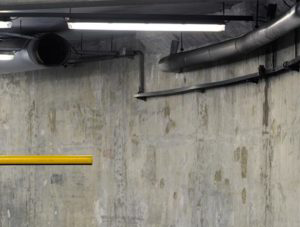It’s far from wise to assume that an apartment complex’s parking lot can go completely unsupervised, but the alternative – outsourcing to an outside provider – may not be warranted in a world where less people are driving cars.
Using a trusted outside vendor may mean that the parking system is in good, reliable hands — certainly a necessity in a densely-populated city where parking is a precious commodity and a constant competition. However, that comes at a price. The leasing contracts at the heart of these management arrangements are often lengthy, which puts building owners in a sticky situation if fewer people than expected or allotted are using cars. And that’s already happening — in no small part thanks to nearby free parking, roughly one-third of expensive parking spots maintained by residential buildings go unused overnight, a period when they’re supposed to be occupied.
Parking facilities may find it tough to justify spending money on an outsourced solution when fewer car owners are willing to purchase parking. This contrast between unused spaces and declining customer demand is no small issue, either. Just over two years ago, studies found that, on average, supply of parking spaces was a whopping 65 percent greater than consumer demand for parking.
That sort of dip leaves a lot of questions for a building owner. Should the complex owner hire its own staff, or simply scale back an outside provider’s involvement? How can a building owner change services in a way that won’t negatively impact residents? The answer to that question may not be found with people, but with machines.
How parking management systems can support current operations
Parking garage management for residential buildings isn’t an issue of what a particular provider “can” or “cannot” do, but how technology can support the in-house staff a manager may consider hiring or the outsourced solution that may shrink.
For starters, whether the solution is currently outsourced or manned in-house, a parking management system with spot identification technology can reduce the need to expand an existing team. Spot identification is still an important need in parking management — customer complaints about scarce parking are endless and often unfounded. Even the most diligent parking facility employee is likely unable to tally the number of vacant and occupied spaces at any given moment, and a system of sensors and LED lights can make identifying these spots easier.
A level guidance system offered by a parking management solution can also augment the amount of work current employees need to do, eliminating the possibility of hiring additional staff. If an assigned spot system is too burdensome to maintain, a level guidance system can keep track, in real time, of the number of parking spaces available throughout the parking garage. A level guidance system eliminates the need to monitor who is in someone’s “assigned” spot. Even if a residential building wanted to maintain or introduce an assigned spot system, an employee would no longer be responsible for manual checks: accompanying parking management software would mark each spot as occupied or empty.
Parking technologies support a changing reality
While car ownership in high-density cities is certainly fluctuating, something as (quite literally) concrete as parking is a lot more difficult to change. With parking management systems, building owners are given an opportunity to work smarter, not harder, to properly manage what they have in the face of changing trends in car ownership and parking demand. With a sensor-powered automated system, building owners can reduce the financial burden of a lengthy outsourcing contract and instead gain better in-house control over how their tenants are using the space – a smarter use of time and money in the face of changing parking realities.

